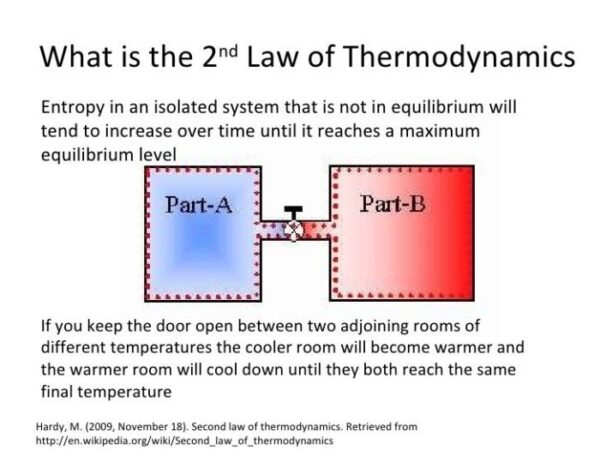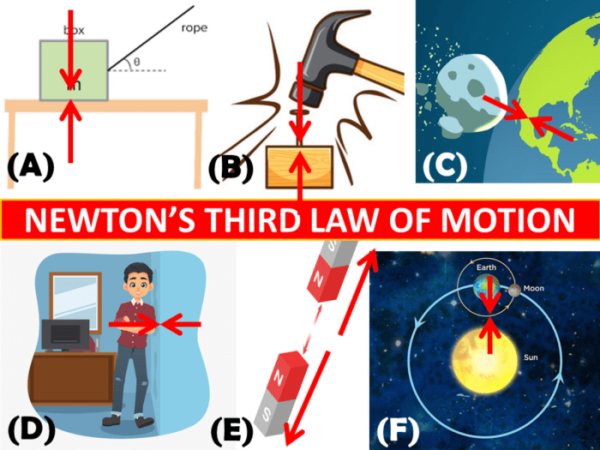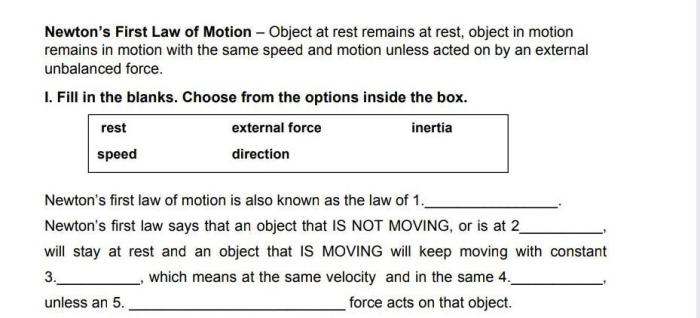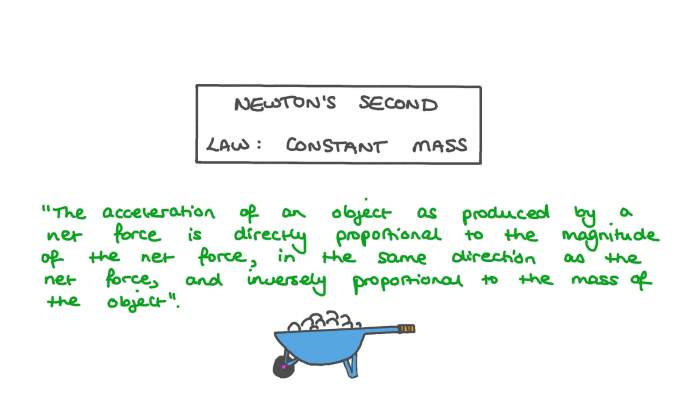
What are the laws of gravity? This seemingly simple question has captivated scientists and philosophers for centuries. From the ancient Greeks who pondered the nature of falling objects to modern physicists exploring the mysteries of black holes, the force of gravity has been a constant source of fascination and study. Gravity is the invisible force that holds us to the Earth, keeps the planets in orbit around the sun, and shapes the universe on a grand scale. This article delves into the fundamental laws that govern gravity, exploring its effects on our daily lives and the cosmos as a whole.
We will begin by examining Newton’s Law of Universal Gravitation, the foundation upon which our understanding of gravity rests. We will then delve into the concept of gravity as a force, exploring how it varies across different celestial bodies. Further, we will examine the relationship between gravity and acceleration, the factors that influence its strength, and its role in shaping our world.
Newton’s Law of Universal Gravitation
Newton’s Law of Universal Gravitation, formulated by Sir Isaac Newton in the 17th century, is a fundamental law of physics that describes the attractive force between any two objects with mass. This force, known as gravity, is responsible for keeping us grounded on Earth, holding the planets in their orbits around the sun, and shaping the structure of the universe.
Understanding Newton’s Law of Universal Gravitation
Newton’s Law of Universal Gravitation states that every particle in the universe attracts every other particle with a force that is proportional to the product of their masses and inversely proportional to the square of the distance between their centers. This means that the more massive the objects are, the stronger the gravitational force between them. Conversely, the farther apart the objects are, the weaker the gravitational force.
The force of gravity between two objects is directly proportional to the product of their masses and inversely proportional to the square of the distance between their centers.
Examples of Newton’s Law of Universal Gravitation in Everyday Life
The effects of gravity are all around us, influencing our daily lives in numerous ways.
- Falling Objects: When we drop an object, it falls to the ground due to the gravitational force of attraction between the object and the Earth. The greater the mass of the object, the stronger the gravitational force, resulting in a faster fall.
- Tides: The tides on Earth are caused by the gravitational pull of the Moon and the Sun. The Moon’s gravitational pull is stronger on the side of the Earth facing it, causing a bulge in the water. This bulge creates high tides, while the opposite side of the Earth experiences low tides.
- Orbiting Satellites: Satellites orbiting Earth are constantly falling towards the planet due to gravity. However, their forward velocity keeps them in a circular or elliptical path, preventing them from crashing into the Earth.
Calculating the Force of Attraction Between Objects
Newton’s Law of Universal Gravitation can be used to calculate the force of attraction between any two objects. The formula for calculating this force is:
F = G * (m1 * m2) / r²
Where:
* F is the force of gravity
* G is the gravitational constant, approximately 6.674 × 10⁻¹¹ N⋅m²/kg²
* m1 and m2 are the masses of the two objects
* r is the distance between the centers of the two objects
Using this formula, we can calculate the gravitational force between any two objects, from small objects like apples to massive objects like planets. For example, the gravitational force between the Earth and the Moon can be calculated using this formula, considering their masses and the distance between their centers.
The Force of Gravity

Gravity is a fundamental force of nature that governs the attraction between any two objects with mass. It’s what keeps us grounded on Earth, what causes the planets to orbit the Sun, and what holds galaxies together.
The Strength of Gravity
The strength of the gravitational force depends on two key factors: the mass of the objects involved and the distance between them.
The greater the mass of the objects, the stronger the gravitational force between them. Conversely, the farther apart the objects are, the weaker the gravitational force.
Gravity on Earth and Other Planets
The force of gravity on Earth is not the same as on other planets. This is because the mass and radius of each planet differ.
- Earth has a stronger gravitational pull than the Moon, because Earth has a greater mass.
- Jupiter, with its massive size, exerts a much stronger gravitational force than Earth, making it a giant vacuum cleaner in the solar system, attracting asteroids and comets.
- Mars has a weaker gravitational pull than Earth, which means that objects on Mars would weigh less than they would on Earth.
Factors Affecting Gravitational Force
Several factors influence the strength of the gravitational force:
- Mass: The more massive an object, the stronger its gravitational pull. This is why planets with larger masses, like Jupiter, have stronger gravitational fields than smaller planets like Mars.
- Distance: The gravitational force decreases rapidly with distance. The farther away you are from an object, the weaker the gravitational pull. This is why the Moon, despite being a relatively large object, exerts a weaker gravitational force on Earth than the Sun, which is much farther away but also significantly more massive.
- Density: The density of an object can also affect its gravitational pull. For instance, a black hole, despite being small in size, has an incredibly dense mass, creating an intense gravitational field that even light cannot escape.
Gravitational Potential Energy
Gravitational potential energy is the energy an object possesses due to its position in a gravitational field. It is the energy stored in an object as a result of its vertical position or height relative to a reference point. The higher an object is, the more gravitational potential energy it has.
Imagine holding a ball above the ground. The ball has gravitational potential energy because it has the potential to fall due to gravity. If you release the ball, it will accelerate downwards, converting its potential energy into kinetic energy (the energy of motion). The higher the ball is, the more potential energy it has, and the faster it will fall when released.
Relationship Between Gravitational Potential Energy and Height
Gravitational potential energy is directly proportional to the height of an object. This means that as the height of an object increases, its gravitational potential energy also increases. This relationship can be expressed mathematically using the following equation:
Gravitational Potential Energy (GPE) = mgh
where:
* GPE is the gravitational potential energy (measured in Joules)
* m is the mass of the object (measured in kilograms)
* g is the acceleration due to gravity (approximately 9.8 m/s² on Earth)
* h is the height of the object (measured in meters)
Real-World Applications of Gravitational Potential Energy
Gravitational potential energy is a fundamental concept in physics with many real-world applications. Here are a few examples:
- Hydroelectric power plants: Hydroelectric power plants use the gravitational potential energy of water stored at high elevations in reservoirs. As the water flows down through turbines, its potential energy is converted into kinetic energy, which drives generators to produce electricity.
- Roller coasters: Roller coasters use gravitational potential energy to propel the cars up and down the track. The cars are pulled up to the top of the highest hill, giving them maximum potential energy. As they descend, this potential energy is converted into kinetic energy, causing them to accelerate. The cars then climb up the next hill, trading kinetic energy back into potential energy, and the cycle repeats.
- Bungee jumping: Bungee jumping is another example of the use of gravitational potential energy. When a person jumps from a high platform with a bungee cord attached to their legs, they have maximum potential energy at the top. As they fall, their potential energy is converted into kinetic energy, causing them to accelerate. The bungee cord then stretches, slowing the person’s descent and converting kinetic energy back into potential energy.
Applications of Gravity: What Are The Laws Of Gravity

Gravity, the force that governs the interaction between any two objects with mass, is a fundamental force in the universe. It is responsible for everything from the fall of an apple to the formation of galaxies. This section explores various applications of gravity in different fields, highlighting its profound impact on our understanding of the universe and its role in our daily lives.
Applications of Gravity in Astronomy
Gravity plays a crucial role in shaping the universe as we know it. Its influence is evident in various astronomical phenomena:
- Formation of Stars and Planets: Gravity is the driving force behind the formation of stars and planets. When massive clouds of gas and dust collapse under their own gravity, they eventually ignite, forming stars. The remaining material then coalesces around the star, forming planets.
- Motion of Celestial Bodies: Gravity governs the motion of celestial bodies, including planets, moons, and stars. It dictates their orbits, keeping them bound to their respective systems. The gravitational pull of the Sun, for example, keeps Earth in its orbit.
- Formation of Galaxies: Gravity also plays a key role in the formation of galaxies. Galaxies are vast collections of stars, gas, and dust held together by gravity. The gravitational pull of the dark matter, which is thought to make up a significant portion of the universe’s mass, helps to shape and maintain the structure of galaxies.
- Black Holes: Black holes are extremely dense objects with gravitational fields so strong that nothing, not even light, can escape their pull. They are formed when massive stars collapse at the end of their lives. Black holes are powerful tools for studying gravity in extreme conditions.
Applications of Gravity in Physics
Gravity has been a subject of intense study in physics, leading to significant advancements in our understanding of the universe:
- Newton’s Law of Universal Gravitation: This law describes the force of attraction between any two objects with mass. It states that the force is directly proportional to the product of their masses and inversely proportional to the square of the distance between them.
F = G * (m1 * m2) / r^2
- Einstein’s Theory of General Relativity: This theory revolutionized our understanding of gravity, proposing that gravity is not a force but a curvature of spacetime caused by the presence of mass and energy. This theory has implications for understanding the universe’s expansion and the nature of black holes.
- Gravitational Waves: These ripples in spacetime were predicted by Einstein’s theory of general relativity and were finally detected in 2015. The detection of gravitational waves opened a new window into the universe, allowing us to study events like the collision of black holes and neutron stars.
Applications of Gravity in Engineering
Gravity is a crucial factor in many engineering applications:
- Civil Engineering: Gravity is considered in the design of buildings, bridges, and other structures. The weight of the structure and the forces acting on it due to gravity must be carefully considered to ensure stability and prevent collapse.
- Mechanical Engineering: Gravity is an important factor in the design of machines and systems. For example, the design of a roller coaster must take into account the forces of gravity acting on the cars as they travel along the track.
- Aerospace Engineering: Gravity is essential in the design and operation of spacecraft. Spacecraft need to overcome Earth’s gravity to escape its atmosphere and travel to other celestial bodies.
- Environmental Engineering: Gravity plays a role in various environmental processes, such as water flow in rivers and streams and the movement of pollutants in the environment.
Applications of Gravity in Our Daily Lives
Gravity is an omnipresent force that affects our lives in countless ways:
- Walking and Running: We rely on gravity to keep our feet on the ground and to move forward when we walk or run.
- Throwing and Catching: The trajectory of a ball thrown or caught is influenced by gravity.
- Water Flow: Gravity is the driving force behind the flow of water in rivers, streams, and plumbing systems.
- Weather Patterns: Gravity plays a role in weather patterns, influencing the movement of air masses and the formation of clouds.
| Field | Application | Description |
|---|---|---|
| Astronomy | Formation of Stars and Planets | Gravity is the force that pulls together gas and dust to form stars and planets. |
| Astronomy | Motion of Celestial Bodies | Gravity keeps planets in orbit around stars and moons in orbit around planets. |
| Astronomy | Formation of Galaxies | Gravity holds galaxies together and shapes their structure. |
| Astronomy | Black Holes | Black holes are extremely dense objects with gravity so strong that nothing, not even light, can escape. |
| Physics | Newton’s Law of Universal Gravitation | This law describes the force of attraction between any two objects with mass. |
| Physics | Einstein’s Theory of General Relativity | This theory revolutionized our understanding of gravity, proposing that gravity is a curvature of spacetime. |
| Physics | Gravitational Waves | These ripples in spacetime are caused by massive objects accelerating. |
| Engineering | Civil Engineering | Gravity is considered in the design of buildings, bridges, and other structures to ensure stability. |
| Engineering | Mechanical Engineering | Gravity is an important factor in the design of machines and systems. |
| Engineering | Aerospace Engineering | Gravity is essential in the design and operation of spacecraft. |
| Engineering | Environmental Engineering | Gravity plays a role in various environmental processes, such as water flow. |
Theories Beyond Newton’s Law
Newton’s Law of Universal Gravitation, while remarkably successful in explaining a wide range of gravitational phenomena, has its limitations. These limitations paved the way for a more profound understanding of gravity, embodied in Einstein’s theory of general relativity.
Einstein’s Theory of General Relativity, What are the laws of gravity
Einstein’s theory of general relativity revolutionized our understanding of gravity, proposing that gravity is not a force, but rather a manifestation of the curvature of spacetime caused by the presence of mass and energy. Einstein’s theory deviates significantly from Newton’s, offering a more comprehensive and accurate description of gravity, particularly in extreme conditions.
Einstein’s theory of general relativity states that gravity is not a force, but rather a curvature of spacetime caused by the presence of mass and energy.
Einstein’s theory has had a profound impact on our understanding of the universe, leading to predictions that have been experimentally verified, such as the bending of light around massive objects, the existence of black holes, and the expansion of the universe.
Differences Between Newton’s and Einstein’s Theories of Gravity
Newton’s and Einstein’s theories of gravity differ in their fundamental concepts and predictions, particularly in extreme gravitational fields. Here are some key differences:
- Nature of Gravity: Newton’s theory describes gravity as a force acting between objects with mass, while Einstein’s theory describes gravity as a curvature of spacetime caused by mass and energy.
- Speed of Gravity: Newton’s theory assumes that gravity acts instantaneously, while Einstein’s theory predicts that gravity travels at the speed of light.
- Predictions in Strong Gravitational Fields: Newton’s theory breaks down in strong gravitational fields, such as those found near black holes, while Einstein’s theory remains valid.
- Time Dilation: Einstein’s theory predicts that time slows down in strong gravitational fields, a phenomenon not accounted for in Newton’s theory.
- Gravitational Lensing: Einstein’s theory predicts that light bends around massive objects, a phenomenon known as gravitational lensing, which has been observed in numerous astronomical observations.
End of Discussion
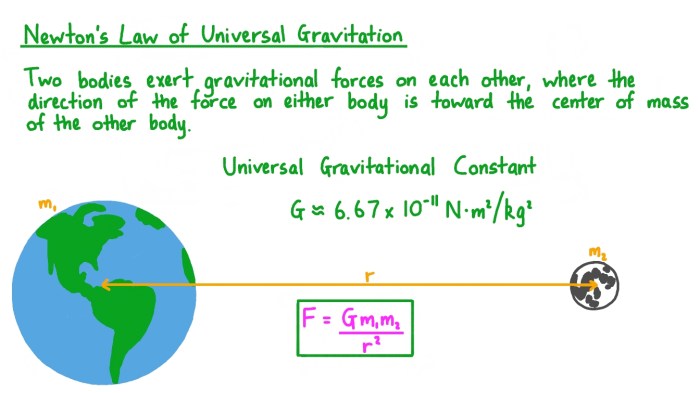
Understanding the laws of gravity is crucial for comprehending the universe around us. From the simple act of walking to the intricate workings of satellites and space exploration, gravity plays a vital role in our lives. As we have explored, Newton’s Law of Universal Gravitation provides a fundamental framework for understanding gravity, while Einstein’s theory of general relativity offers a more comprehensive view of this enigmatic force. While much remains to be discovered, our understanding of gravity continues to evolve, promising further insights into the mysteries of the cosmos.
FAQs
What is the difference between weight and mass?
Mass is a measure of the amount of matter in an object, while weight is the force of gravity acting on that object. Mass is constant, while weight can vary depending on the gravitational field.
Does gravity affect light?
Yes, gravity affects light. Einstein’s theory of general relativity shows that gravity can bend the path of light, a phenomenon known as gravitational lensing. This effect has been observed and verified through astronomical observations.
What are black holes, and how do they relate to gravity?
Black holes are regions of spacetime where gravity is so strong that nothing, not even light, can escape. They are formed when massive stars collapse at the end of their lives. The immense gravitational pull of a black hole is a consequence of its extreme density.
